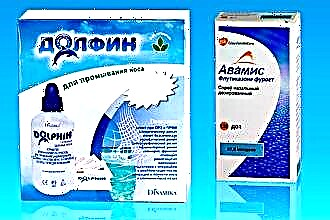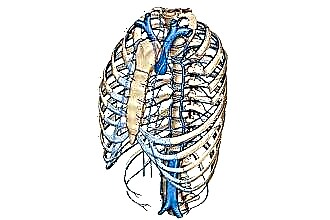In most cases, acute otitis media is not severe. Improvement of the drainage function of the auditory tube in catarrhal otitis media in a short time leads to the normalization of the condition and restoration of hearing. The development of purulent inflammation most often also has a benign course. Frightening suppuration is a natural and natural outcome of the disease.
With timely and correct treatment, the duration of the disease is about 10 days.
The resulting perforation of the tympanic membrane can heal on its own within a few weeks, if the diameter of the hole formed does not exceed 1 mm. At the same time, the restoration of hearing in children takes from one to three months.
Features of the reparative stage

Those situations when a child has poor hearing after otitis media for two weeks should not be frightening for parents. The otolaryngologist, under whose control the child was during the treatment, must explain that the reparative stage of acute purulent otitis media takes a certain amount of time, which is necessary precisely for scarring the injured tympanic membrane. To speed up these processes, the following activities are recommended:
- blowing through the auditory tube with the introduction into the tympanic cavity of drugs that prevent the formation of adhesions;
- physiotherapeutic procedures (electrophoresis with lidase and enzymes with resorption effect);
- pneumomassage of the tympanic membrane;
- the use of biostimulants (Actovegin, Apilak);
- vitamin therapy.
In most cases, the course of an acute purulent process is characterized by the rapid development of symptoms, the appearance of suppuration within the first few hours. After its completion and cleaning of the tympanic cavity from pus, a rapid restoration of hearing is noted. However, in recent years, the number of cases with a protracted course of the disease has increased. At the same time, the symptomatology is poorly expressed, perforation of the tympanic membrane is not noted. The presence of a viscous secretion in the tympanic cavity is characteristic, the evacuation of which is difficult.
This development of the disease is accompanied by the presence of adhesive changes in the middle ear cavity itself, which significantly limits the functionality of the bones in the transmission of a sound signal, leading to the development of persistent hearing loss. If carrying out such measures as blowing the auditory tube, introducing proteolytic enzymes into the tympanic cavity that prevent the fibrosis of the process does not give a result, then they resort to surgical techniques. As a therapeutic measure used in this case, surgical removal of viscous secretions from the tympanic cavity using bypass surgery can be performed.
Features of the chronic course
Long-term hearing loss in a child after otitis media indicates the transition of the disease into a chronic form.
In this case, the disease takes on an undulating course. The periods of suppuration are either resumed or stopped. The otoscopic picture is characterized by a persistent hole in the tympanic membrane. It is not necessary to count on self-scarring of the tympanic membrane.
Quite often, conservative treatment is ineffective.
Chronic otitis media is an indication for surgery.
Therapeutic measures, including antibiotic therapy, as a method of treatment, are used only with an exacerbation of the process before surgery or at the stage of the postoperative course. The most common method is tympanoplasty, which involves restoring the opening in the eardrum using natural or synthetic materials.
The predisposing factors contributing to the transition of the disease into a chronic form is the presence of concomitant pathology in the child, such as
- diabetes;
- pronounced rickets;
- pathology of the ENT organs (enlarged adenoids, curvature of the nasal septum);
- frequent SARS;
- immunodeficiency states.
The task of the otolaryngologist is the timely and correct prescription of drugs in order to prevent the chronization of the process. A frequent reason for this development of the disease is uncontrolled and incorrect use of antibiotics. In the treatment of acute purulent otitis media, it is necessary to adhere to the strict instructions of the otolaryngologist on the use of antibacterial agents, both in the form of tablets and ear drops.
incorrect use of antibiotics. In the treatment of acute purulent otitis media, it is necessary to adhere to the strict instructions of the otolaryngologist on the use of antibacterial agents, both in the form of tablets and ear drops.
The terms of antibiotic treatment should be at least 10 days, even if the clinical picture normalizes in a shorter time.
A single dose and frequency of administration of funds are also important. In cases where it is not possible to conduct a study on the sensitivity of microflora to antibiotics, antibiotics from the amoxicillin group are used to treat otitis media. Failure to comply with these rules and especially the cessation of antibiotics at an earlier date leads to the development of chronic otitis media.
Purulent complications
In addition to severe hearing loss, severe complications after otitis media in children can be as follows:
- mastoiditis;
- empyema of the mastoid process;
- meningitis.
In cases where the perforation of the tympanic membrane did not improve the clinical picture of the disease, and there is still a pronounced malaise, an increase in body temperature up to 39-40 degrees, then most likely we are talking about the involvement of the mastoid process of the temporal bone in the inflammatory process, the development of mastoiditis. Additional symptoms are as follows:
- the presence of pain in the behind-the-ear region;
- hyperemia and swelling of this area, as a result of which the auricle protrudes;
- the child tries to take a forced position of the body, tilting his head towards the defeat.
Mastoiditis is characterized by purulent fusion of the middle ear ossicles. This complication is a surgical pathology. As a method of treatment, an operation can be performed to scrap the cavity of the middle ear, accompanied by the development of persistent deafness.
Prolonged suppuration, for several weeks, indicates the development of empyema of the mastoid process, when the bone bridges of the process undergo purulent fusion.
The transition of a purulent process to the membranes of the brain is evidenced by the appearance of meningeal signs, such as vomiting, impaired consciousness, and the development of seizures.
Despite the fact that in most cases, recovery is possible even without the use of antibacterial agents, the consequences of otitis media in children can be very serious. Parents should be able to suspect this pathology in time in order to get timely expert advice from a specialist. The earlier the treatment of otitis media is started, the less the likelihood of the development of acute purulent inflammation, and, consequently, its complications, which in some cases are the cause of death.



